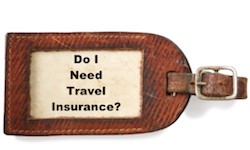Smaller Carry-On Bags to Become Industry Standard?
If you’ve been on a plane lately, you’ve certainly noticed a number of people trying to stuff a suitcase the size of an elephant into the overhead bins. Right? :O
These selfish, or perhaps unaware folks tend to hold up the whole loading process as they ultimately realize their bag won’t fit, and then must try to thread their way back to the front of the plane to check their bag.
In an effort to solve this problem, the International Air Transport Association is seeking to create a standardized size for carry-on luggage.
While smaller than what some airlines currently allow (not sure we like that), each new bag would also have a unique identification code that would allow airlines to alert your cell phone that your lost bag has been found (we like that a lot).
American Airlines, Delta Air Lines and United Airlines all currently allow bags up to 22 inches by 14 inches by 9 inches
For the whole scoop, read this press release from IATA:
The International Air Transport Association (IATA), announced a new initiative to optimize the accommodation of carry-on bags given differing carry-on bag sizes and airline policies.
Working with airline members of IATA and aircraft manufacturers, an optimum size guideline for carry-on bags has been agreed that will make the best use of cabin storage space. A size of 55 x 35 x 20 cm (or 21.5 x 13.5 x 7.5 inches) means that theoretically everyone should have a chance to store their carry-on bags on board aircraft of 120 seats or larger.
An “IATA Cabin OK” logo to signify to airline staff that a bag meets the agreed size guidelines has been developed. A number of major international airlines have signaled their interest to join the initiative and will soon be introducing the guidelines into their operations.
“The development of an agreed optimal cabin bag size will bring common sense and order to the problem of differing sizes for carry-on bags. We know the current situation can be frustrating for passengers. This work will help to iron out inconsistencies and lead to an improved passenger experience,” said Tom Windmuller, IATA’s Senior Vice President for Airport, Passenger, Cargo and Security.
IATA is working with baggage tracking solutions provider Okoban to manage the approval process of bag manufacturers. Each bag meeting the dimensions of the specifications will carry a special joint label featuring IATA and Okoban as well as a unique identification code that signals to airline staff that the bag complies with the optimum size guidelines.
Several major baggage manufacturers have developed products in line with the optimum size guidelines, and it is expected bags carrying the identifying label will start to reach retail shops later this year. Recognition of the IATA Cabin OK logo is expected to grow with time as more airlines opt-in to this IATA initiative.
While we’re not crazy about the slightly smaller bag, we hope that manufacturers will all get on board to help create an industry standard. If all goes well, and the individual airlines enforce this policy at the gate, then hopping aboard an airplane should be a smoother process.
What say you? Agree, or disagree? Share your thoughts in the comments section below.
If you enjoyed this article, sign up for our monthly newsletter to keep abreast of our best travel tips, on-location reviews, exclusive travel offers, group travel events, and much more.

 The Roaming Boomers
The Roaming Boomers




